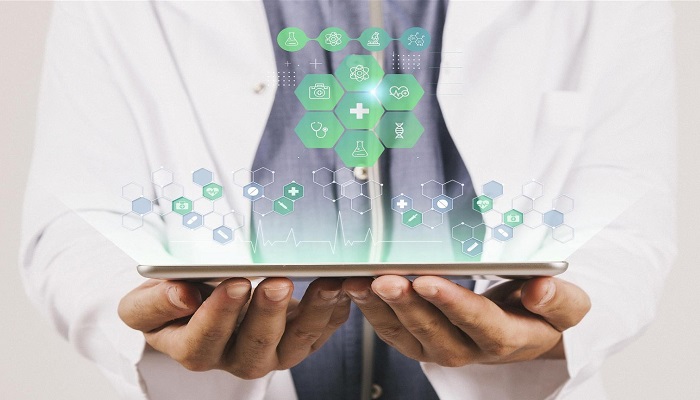The market when it comes to connected drug delivery devices is going through rapid growth, with an expected annual market growth rate of more than 20% between 2023 and 2030. This progress is driven, in part, by the increasing trend of self-administration of medications outside of the traditional healthcare landscape. However, it is likely that various pharmaceutical companies lack a full understanding of their own and their patients’ specific needs with regards to the connected devices. Moreover, they may not be in sync when considering matters when it comes to devices.
Is there a clear market need in case of increased connectivity?
In the present industry shift towards Pharma 4.0, companies are indeed understanding the importance of connectivity as well as data transfer so as to gain a competitive edge when it comes to a saturated market. This is especially obvious for biosimilars producers, as the patents for initial biologics are all set to expire within the coming three to four years. The attractive benefit of patient support, adherence monitoring, as well as reduced use errors lies in their actual benefits. However, any innovation within the field has to be based on market demand and should take into account important issues related to therapy management, adherence, along with outcomes. Alternatively, it can elevate the patient experience in a dominant manner. The connection between adherence and enhanced results happens to be a crucial factor to consider when assessing the cost and determining if the market will go ahead with an investment in connectivity. Simply put, pursuing connectivity without a definite purpose or goal is not sufficient.
Enhancing the patient experience by offering additional value
Connected devices have the potential to be a valuable tool when it comes to enhancing patient engagement, especially when incorporated into a patient support program. Connectivity can be incorporated into demonstration devices so as to assist with training by offering targeted feedback to patients who are making use of the device for the first time or perhaps feel less confident in their ability to utilize it in an accurate way. Because of the increasing prevalence of remote monitoring, connected devices have the potential to offer patients enhanced guidance. The devices can provide reminders, help prevent errors in device handling as well as medication management, and even offer visual feedback so as to guarantee proper rotation when it comes to injection sites.
While extended-release formulations continue to make advancements, thereby allowing for longer intervals between injections, there is a concern that patients may forget the proper usage of their device. In scenarios such as these, the added guidance offered by connected devices can be extremely helpful in ensuring compliance. Pharmaceutical companies need to take into account the cost when it comes to connectivity for injections that are administered very infrequently or at a low cost. There is no universally applicable solution for this, and decisions regarding each disease as well as therapy should be made on a case-by-case basis.
Savings with adherence data
In cases where it can be ascertained that improved adherence through connected drug delivery devices goes on to lead to better outcomes, there is a possibility of cost savings throughout the healthcare system. This has reduced the need for consultations, interventions, and more prescriptions.
It is well to be noted that the data collected by connected devices enables to have information on the timing as well as actual dosage when it comes to therapies, such as the frequency and volume of medication injections. This goes on to prevent drug waste and, at the same time, promote more efficient medication use. It is crucial to consider the increasing healthcare expenses in Europe and the US, which happen to be primarily driven by the rising prices concerning biologic therapies. These costs are further pushed by economic pressures as well as the healthcare challenges that happen to be associated with aging populations as well as declining overall health. For a device to be prescribed and reimbursed, it is mandatory for it to have a value proposition or story that’s compelling enough.
In the US, when it comes to information on adherence, it can be utilized as an element of a value story to impactfully influence payer reimbursement. One of the key trends in healthcare is the provision when it comes to chronic care management outside of a hospital facility. In accordance with this trend, reimbursement rules happen to be undergoing changes so as to include coverage for remote monitoring in case of healthcare. The progress of connected devices is greatly influenced by such a driving force. In today’s healthcare landscape, numerous payers are increasingly seeking economic as well as clinical data so as to support the reimbursement of products and elevate the health outcomes of the populations they serve. In this context, data obtained from connected devices can go on to offer valuable reassurance, especially for new drugs that may have limited real-world data available. When it comes to rare diseases with smaller populations, drug development for orphan status can be costly because of the need for more specific therapeutic targets. To address this issue, getting connectivity accumulated into therapies can be a valuable strategy. This approach helps the pharmaceutical companies to collect data on adherence as well as treatment outcomes, which can in turn support the reimbursement-securing process.
Novel devices and add-on connectivity
The prevalence when it comes to add-ons for pre-existing devices is anticipated to increase as the development of connected devices goes on. These solutions may go on to offer the advantage of a simpler regulatory pathway since the original drug-device mix product has already gotten the nod. One more advantage of a connected add-on happens to be its versatility in terms of usage, whether with or without a connectivity option. This adaptability can be customized so as to suit different markets and patient groups. It is especially important to consider the needs as well as levels of engagement of different types of patients.
It is imperative to not overlook fully integrated novel drug delivery solutions that include connectivity attributes. Taking user needs into consideration too early in the design development process is indeed possible, while having add-ons may lead to compromises when it comes to usability. The user experience happens to be crucial because it directly goes on to impact engagement. Device design as well as configuration are key factors in shaping the user experience. Furthermore, it plays a critical role in ensuring that the user interface, along with any additional applications, is as natural as possible.
Environmental impact must be taken into consideration when making decisions in both cases, considering the overall life cycle of the device. While infection control requires the use of certain single-use components, their impact can be lessened by implementing innovative hybrid designs. These designs enable for the reuse of main parts, particularly the digital element.
Performance of driving devices
Once the devices happen to be on the market, the data from connected devices can also be utilized to elevate device performance. The capacity to detect device issues as well as malfunctions is highly valuable for pharma and device companies when it comes to terms of quality. It helps them identify the basic causes and analyse errors in devices. This feedback loop has the potential to greatly enhance device design.
There happens to be a high probability of prominent progress in this area in the near future. This is because of the rising use of novel technologies as well as sensors to gather data about device performance. Moreover, the advent of 5G technology will facilitate instantaneous data transfer from the device to the cloud, thereby eliminating the necessity for a secondary device or application. This will enable manufacturers to gather valuable real-world usability data as well as enhance the overall user experience.
Utilizing connected devices during the clinical trial phase
The utilization when it comes to data from connected drug delivery devices has the potential to immensely enhance clinical trials. By incorporating patient adherence data, sponsors can effectively demonstrate the therapeutic value of a treatment for patient outcomes. The capacity to conduct remote clinical trials eradicates geographical limitations as well as allows for a more diverse range of patients to participate. Additionally, it presents the potential to discover the efficacy of therapies in different markets. Including a wider range of participants in the clinical trial phase can help ensure that medical devices are appropriate for a more diverse group of patients. This, in turn, can help promote healthcare equity.
Remote monitoring throughout the clinical trials, specifically the data capture performed by connected devices, has the capacity to save both patients and clinical teams valuable time and effort. This method is not only easier than using paper or web-based forms, but it also has the potential to be more accurate. Real-time data can be used by researchers so as to make corrections and treatment interventions during the clinical trial, whenever applicable.
Connectivity offers a wide range of potential for pharmaceutical companies, bringing numerous benefits for payers, patients, as well as healthcare professionals. However, it is imperative for them to establish an in-depth awareness of the aim of connectivity and the tangible benefits that connected devices can give out during the initial stages of decision-making and device development.



















